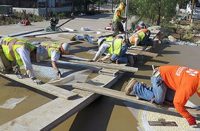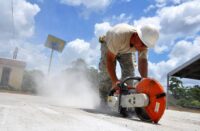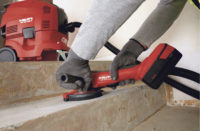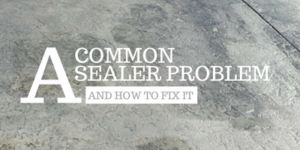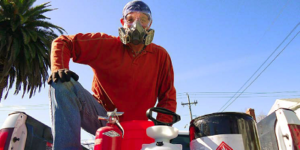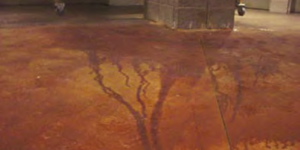
This is my list, just a few things to think about. NOTE: It’s NOT intended to be comprehensive or complete.
A. Know your material/s. Use the proper solvent for your situation. Read and understand your tech-data and MSDS sheets. Some solvents have higher solvency, are “hotter,” than others. Some dry slowly. Others dry quickly. Some are VOC-exempt while others are not. Some burn. Some explode and burn. Some pose greater immediate physical risks. Others pose greater long-term health risks.
B. Eliminate all potential points of ignition. This includes open flames, such as pilot lights (in water heaters, stoves and the like), propane heaters, welder’s torches, lit cigarettes, etc. It also includes things that might spark, like electric tools (drills, saws and, yes, floor machines), exposed filaments in broken bulbs in strung lights, or halogen lights on tripods that might be accidentally knocked over and broken.
C. Properly ventilate the space. Many solvents and solvent-based products are heavier than air. When working with them, basements are especially dangerous spaces. Confined areas are also especially dangerous. Wide-open areas with high ceilings are not quite so bad. In fact, I’ve witnessed an acetone explosion over a 10,000-square-foot area, in a mall — dramatic, but with no serious results, because of a wide-open area with high ceilings. Whereas, my experience in the confined basement was devastating. If possible, open doors and windows and/or utilize exhaust systems (portable fans, HVAC and so on).
D. Wear a respirator, additional safety gear as required, and appropriate job-site clothing. I wore a respirator on the fireball job, but my choice of work clothing was really poor. A long-sleeve shirt and long pants, in a natural fiber like cotton or wool, with socks and boots (or at least tennis shoes) would’ve made all the difference in the world! Gloves and eye protection also don’t hurt.
E. Keep an eye on your hoses. Solvents and solvent-based products soften hoses, which may unexpectedly burst under pressure. This is exacerbated in warm weather. Goggles or safety glasses come in really handy when this occurs. And, sooner or later, it will occur.
Plan what you’ll do when this happens. Consider having a bucket or trash can handy to temporarily pitch the sprayer into while you attempt to relieve pressure. Always have rags on hand. When you’re not spraying, be sure to release pressure, drain materials from the wand and hose and store in a cool area, in the shade.
F. Have appropriate fire extinguishers handy. This may include a hose of sufficient length with a trigger nozzle and sufficient water pressure.
G. Finally, always have a backup plan — and an escape route.
Although things rarely go wrong, sometimes they do! And it only takes once! Be thoughtful in advance, hope for the best, but prepare for the worst.
